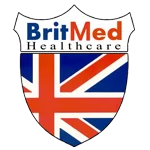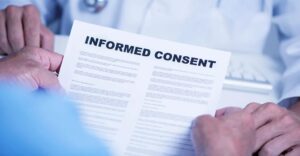Lithium
Overview
For many years, lithium has been the cornerstone therapy for bipolar illness and was among the first medications that regulate mood and are used to treat mood disorders. With decades of clinical expertise under its belt, it has become clear that lithium is useful in treating mania as well as avoiding manic relapses and bipolar disorder depression. Additionally, lithium is utilized to supplement antidepressant medication when treating Antidepressants by themselves are ineffective for depression. This addition of lithium to an antidepressant is often useful in both avoiding depressed recurrence and treating refractory depression.
Similar to sodium, which is found in table salt (sodium chloride), lithium is a simple ion. It’s accessible in the salt form as lithium citrate in a liquid solution and as lithium carbonate in the former. Additionally, lithium carbonate may be found in a medication with regulated release, which might help lessen a lot of the adverse effects on the gastrointestinal tract connected to lithium.
It’s intriguing how a basic ion like lithium can have such intricate effects on the brain. What lithium does in mood stabilization is most likely the result of intricate interactions with many neurotransmitter systems in the mind. It seems that lithium maintains the equilibrium between the excitatory and inhibitory responses of various neurons and neurotransmitters in them. One way to think about bipolar illness is as an overactive neuronal and neural systems ralph. Overactivity of the excitatory neural system may cause mania, and vice versa.
Depression may occur when the inhibitory neural system is overactive. The capacity of lithium to reduce this neural activity. Its efficacy in treating depression and mania may be explained by Ral systems.
Information about Dosing
Because lithium treatment may be hazardous, it has to be closely monitored with laboratory testing. Prior to beginning treatment, the patient’s renal function must be ascertained, for those whose renal function is diminished, the dose has to be modified.
Regular measurements are conducted to see if the prescribed dose results in sufficient plasma levels. When a therapeutic response is obtained, lithium concentrations typically fall between 0.7 and 1.2 mEq/L (milliequivalents per liter). But there is a limited therapeutic window for lithium; if serum levels rise beyond 1.5 mEq/L, lithium toxicology is a problem.
Higher doses are often required for the best results in acute mania. One method is to begin with taking 300 mg twice a day, then increase by 300 mg every 3-5 days until the manic symptoms go away and lithium levels are stable.
Doses may range from 600 to 1,800 mg per day based on the patient’s size, age, and other factors as well as renal function. The aim of maintenance therapy once the patient’s manic episode has subsided is to keep them from relapsing.
counseling, to help the patient better tolerate the medicine, the maintenance dose may be reduced or you could Keep taking lithium for the rest of your life.
Typical Side Effects
The most common adverse effects of using lithium are related to the digestive system, such as dry mouth, indigestion, bloating, cramping in the abdomen, vomiting, diarrhea, and excessive salivation.
Lithium may be taken with food or right after meals to prevent upset. Additional lithium-related negative effects symptoms of treatment include tiredness and mental lethargy, little finger tremors, hair loss and dryness, skin rash, weight increase, thirst, frequent urination, and worsening of psoriasis and acne. Most often, a lot of these side symptoms decrease when the patient becomes used to taking lithium, or the side effect may be controlled by reducing the quantity.
Adverse Events and Safety Measures
Particularly at the beginning of treatment, lithium may make you drowsy and less alert. Patients need to take care When operating a vehicle or carrying out activities requiring attentiveness.
The Hazards of Lithium
Lithium has a limited range between therapeutic and hazardous concentrations. close observation of lithium levels is crucial. Early signs of lithium poisoning include fatigue, vomiting, diarrhea, nausea, and dizziness, weakened muscles, and poor coordination. Higher doses of lithium might cause harmful symptoms as lightheadedness, impaired vision, slurred speech, growing disorientation, ringing in the ears (tinnitus), and difficulty coordinating movements (ataxia), limb and face twitches, and incontinence of the bowels and urine. At extremely poisonous levels, there is a risk of mortality from cardiac arrhythmias, abrupt renal failure, convulsions, and low blood pressure, hypertension, heart failure, and delirium.
Early detection and management are thus crucial to reverse toxicity of lithium. As soon as the patient experiences any of the above symptoms, lithium should be stopped and get in touch with their doctor right away.
It is crucial to remember that the kidneys eliminate lithium, and any disruption in this process may raise the lithium to lethal proportions. The excretion of lithium in people with renal illness may be considerably reduced. Lower dosages are required to make up for decreased renal function. When one is dehydrated, When lithium is used alongside thiazide diuretics or on a low-salt diet, the kidneys reabsorb lithium more readily.
Citrate and Carbonate of Lithium
Intensely, which usually leads in toxicity and raises lithium levels. Dehydration may be brought on by insufficient fluid intake, particularly on hot days when you’ve done a lot of strenuous activity or have a fever or diarrhea.
Insufficient thyroid function
Prolonged lithium treatment may have an impact on the thyroid glands and reduce thyroid production (hypothyroidism).
To determine thyroid function, a typical laboratory test is to detect thyroid-stimulating hormone levels. The hormone known as TSH causes the thyroid glands to operate more vigorously. A higher-than-normal TSH level in Clinical signs are a sign that hypothyroidism is present. The indications and manifestations of hypothyroidism, Thyroid gland enlargement, exhaustion, a cold intolerance, poor energy, and depression are some symptoms of Lithium-induced hypothyroidism may be corrected if the patient stops taking the drug or if they obtain extra thyroid hormone.
Unusual ECG results
The heart’s electrical conductivity and, therefore, its rhythm may be impacted by lithium. It might result in modifications that appear on the ECG. While the majority of lithium users report no changes for elderly or those who have a decline in heart function, the doctor may prescribe a pretreatment ECG with patients who possess a history of heart problems.
Kidney Impairment: Inability to Focus Urine
Occasionally, prolonged lithium treatment is linked to a decrease in the capacity to concentrate the urine.
Renal disease (insipidus nephrogenic), The person is thus very thirsty and has to drink a lot of large volumes of water, which the kidneys are unable to reabsorb and convert, leading to frequent urination.
You should supply water to the body. Fortunately, reducing or stopping the use of lithium may correct this illness.
Use in Breastfeeding and Pregnancy: Pregnancy Category D
Lithium may affect the fetus once it crosses the placenta. instances of neonates having deviant hearts have been documented in pregnant mothers who used lithium. It seems that the danger is greatest when lithium is taken in the first trimester. Whenever feasible, lithium usage during pregnancy should be avoided, especially during the first trimester. But if lithium is withdrawn, mania may return and be dangerous for the mother and fetus. Under these conditions, the doctor could talk about the necessity to resume taking lithium after the first trimester or look for a different drug or course of care.
Lithium should not be used by nursing women as it might be detrimental to the baby and is excreted in breast milk. when consumed by a newborn. Breastfeeding should not begin if quitting the medication is not an option, or should be stopped.
Potential Interactions with Drugs
When some drugs are used together with lithium, there may be pharmacological interactions that change their level which might result in unfavorable outcomes. The documented clinically noteworthy medication interactions involving lithium are enumerated in the table that follows.
Alcohol use should be avoided by lithium patients as it may produce unwanted side effects.
worse. For instance, consuming too much alcohol might lead to dehydration, which can make lithium more hazardous blood concentrations. Additionally, alcohol’s sedative effects might obscure its therapeutic benefits by acting as a depressant effect of lithium and making therapy more difficult.
- Diuretics thiazide Diuretics thiazide (such as hydrochlorothiazide) may raise serum lithium concentrations can cause poisoning.
- Haloperidol, or Haldol Lithium and Haldol together might intensify neurotoxic effects in spite of typical lithium and amounts of Haldol.
- Diuretics in loops, such as Lasix Loop diuretics, such furosemide-containing Lasix, may raise lithium concentrations and cause toxicity. This interaction with loop diuretics is less common than with diuretics thiazide.
- Potassium iodide concurrent usage (as an Lithium and expectorant) may raise the risk of low thyroid function.
Overdosing
Overdosing on lithium is quite dangerous, and the more lithium taken, the more severe the toxic effects become. Common symptoms of serum lithium levels between 1.5 and 2.0 mEq/L include nausea, diarrhea, vomiting nausea, lightheadedness, weakened muscles, and poor coordination. When the levels rise over 2.0 mEq/L, Dizziness, ringing in the ears, slurred speech, growing disorientation and bewilderment, and more are possible symptoms.
Impaired vision, limb and facial twitching, difficulty coordinating movements, and urinating and feces inability to hold oneself, Seizures, acute renal failure, and other consequences are possible when levels rise to 3.0 mEq/L and above.
Cardiac arrhythmias, hypotension, heart failure, and delirium, all of which carry a significant death risk. Treating any suspected overdose as an emergency is imperative. The individual has to be brought to the emergency space for care and observation. Hemodialysis may be necessary in extreme circumstances. The prescription bottle of medicine (as well as any additional medication that may have been taken in excess) should be presented, since the treating physician may use information from the prescription label to assist determine how many taken tablets.
Precaution Points to Remember
It’s important to realize that even when your manic episodes subside, you will need to keep taking your medicine to stop relapses.
• If you forget to take a dosage, catch up by taking it two to three hours later than planned. If it’s near, Skip the missed dosage and resume your usual dosing regimen for the next scheduled dose. Never take double dosages.
• To minimize upset stomach, take lithium right after meals or with food.
• Stay hydrated by drinking plenty of water or other fluids, particularly if you’ve been in the heat for a long time.
• If you develop diarrhea or a fever, call your doctor.
• Lithium may make you feel sleepy and make you less aware, particularly when you first start treatment. Patients need caution when driving or doing other duties requiring awareness, use care.
• Keep the medicine out of direct sunlight and dampness, in the light-resistant container that came with it. Warmth and Moisture may hasten the disintegration of your prescription and cause it to lose its medicinal benefits.
• Make sure kids can’t get to your medicine. See your doctor or pharmacist if you have any queries about your medicine.




